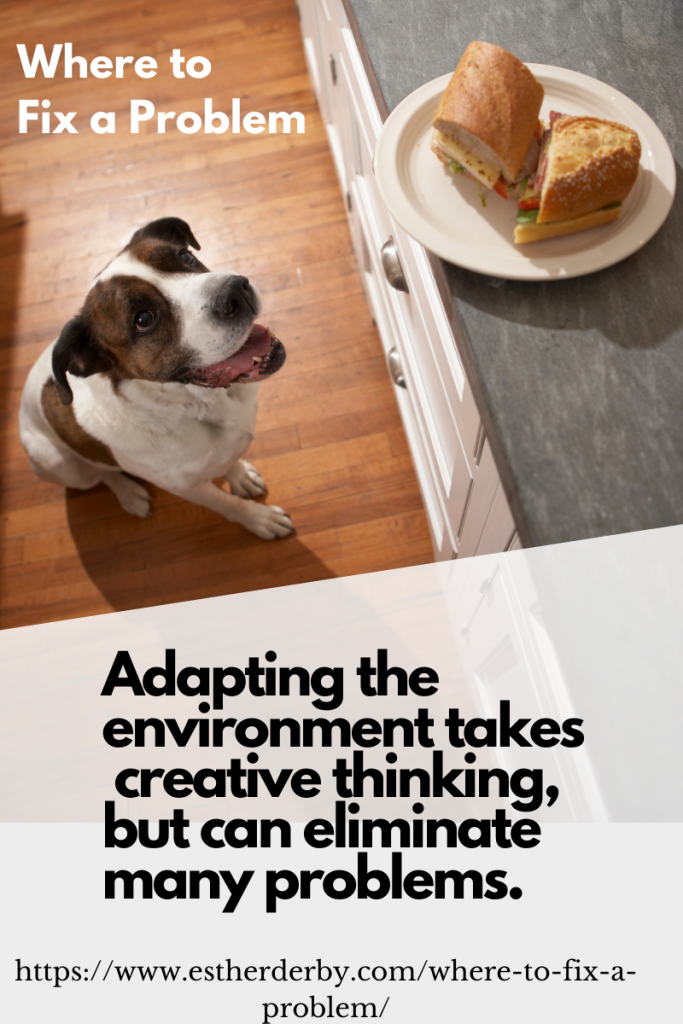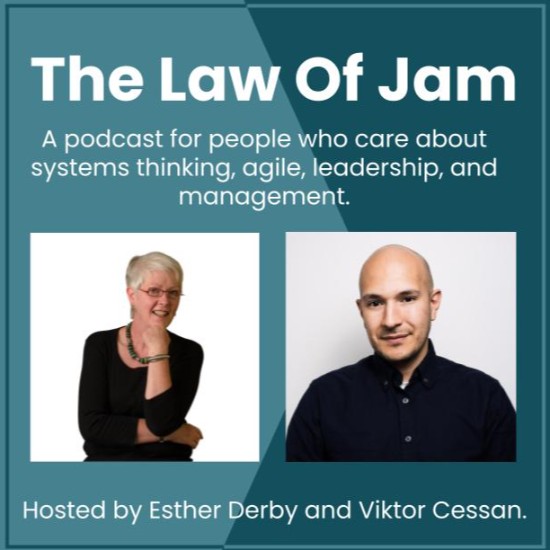When there’s an issue in an organization, people have a tendency to focus on fixing the person(s). But there may be other—more effective—ways to fix the problem.
People are easy to see, and easy to criticize. That’s where we’ve been taught to focus. Performance evaluations and typical management practices reinforce this view.
But behavior is a function of people and their environment. And sometimes adjusting the environment is the easiest, fastest, and most effective way to fix a problem.
A Lesson from My Dog

Let me tell you how my dog, Indy, taught me that lesson, many years ago.
Indy was my first dog. She could easily reach the kitchen counter. An unattended stick of butter, a cake, a 12 oz. steak— all could disappear in an instant when she was around.
This was a problem I really needed to solve. I saw three possible approaches.
- Train Indy to leave tasty, tempting food on the counter, no matter what.
- Discipline myself to never leave food on the counter, or never turn my back during food prep.
- Buy a baby gate, and keep the dog out of the kitchen during food preparation.
Several people advocated the first approach—training. They argued that the dog shouldn’t eat food left on the counter. In their view, it was just plain wrong, and she should know better. It is possible to train a dog to sit and stay in the face of distraction and temptation. Such training requires a great deal of time and consistent effort.
That felt daunting to me. Plus, I didn’t have judgements about Indy’s behavior. She was just being a dog.
I decided to change her behavior by altering the environment. I was more diligent about not leaving tempting food on the counter. And I invested $20 in a baby gate keep Indy out of the kitchen when I was cooking.
Problem solved!
A Work Example
At a conference, a coach used an incident from a recent meeting to demonstrate his coaching technique. First, he set the scene: During a meeting to discuss a technical problem, two people, Fred and Ali, dominated the conversation. Other people in the meeting tried to insert their voices, but these two just kept talking to each other.
The coach, along with a colleague role-playing Fred, recreated the coaching session the coach had with Fred after the meeting.
First the coach asked faux-Fred what he remembered about the meeting. He gradually focused attention on the amount of talking done by Fred and Ali compared to the other participants. Finally, the faux-Fred asked, “Are you telling me I talk too much?”
Insight achieved! The coach believed he’d solved the problem.
Of course, since the presenter was a coach, coaching was his favored method to fix problems. He was invested in showing how he’d successfully coached Fred.
However, watching the session, I considered additional options:
- Train the other people in the meeting to be more assertive to get their voices heard.
- Have the coach, who was in most of these meeting, take a more active role and intervene in the moment when Fred and Ali (or anyone else) started to dominate.
- Have a facilitator for all meetings.
- Structure the meeting in ways that would equalize participation.
Choose Where to Fix the Problem
In both examples the choices involve:
- Coaching another person to change their behavior
- Changing the your own behavior
- Adjusting the environment
Sometimes, requiring another person to change their behavior is the way to go. That requires the agreement of the other human, and may require significant time.
Changing your own behavior is in your control. Your behavior is an aspect of the other person’s environment. It’s the old stimulus response model. By changing your behavior, you may change responses.
Adapting the environment takes some creative thinking, but can eliminate many problems.
Helping Fred understand the impact of his behavior was undoubtedly a reasonable action. Greater self-awareness, is almost always a good thing. This awareness could serve Fred well.
But, had the coach fixed the problem? What about the other dominating participant, Ali? Or the next person who happened to be a talker?
Before I pin the fix on a person, I get curious about the what in the environment might be influencing their behavior, and what I can change in the environment to support different behavior and results. Which approach will be easiest? Fastest? Most effective?






This resonated with me “behavior is a function of people and their environment. And sometimes adjusting the environment is the easiest, fastest, and most effective way to fix a problem.” And “b = f(p,e)” is in a course I teach for HR folks – I will use this article as a good reference next time